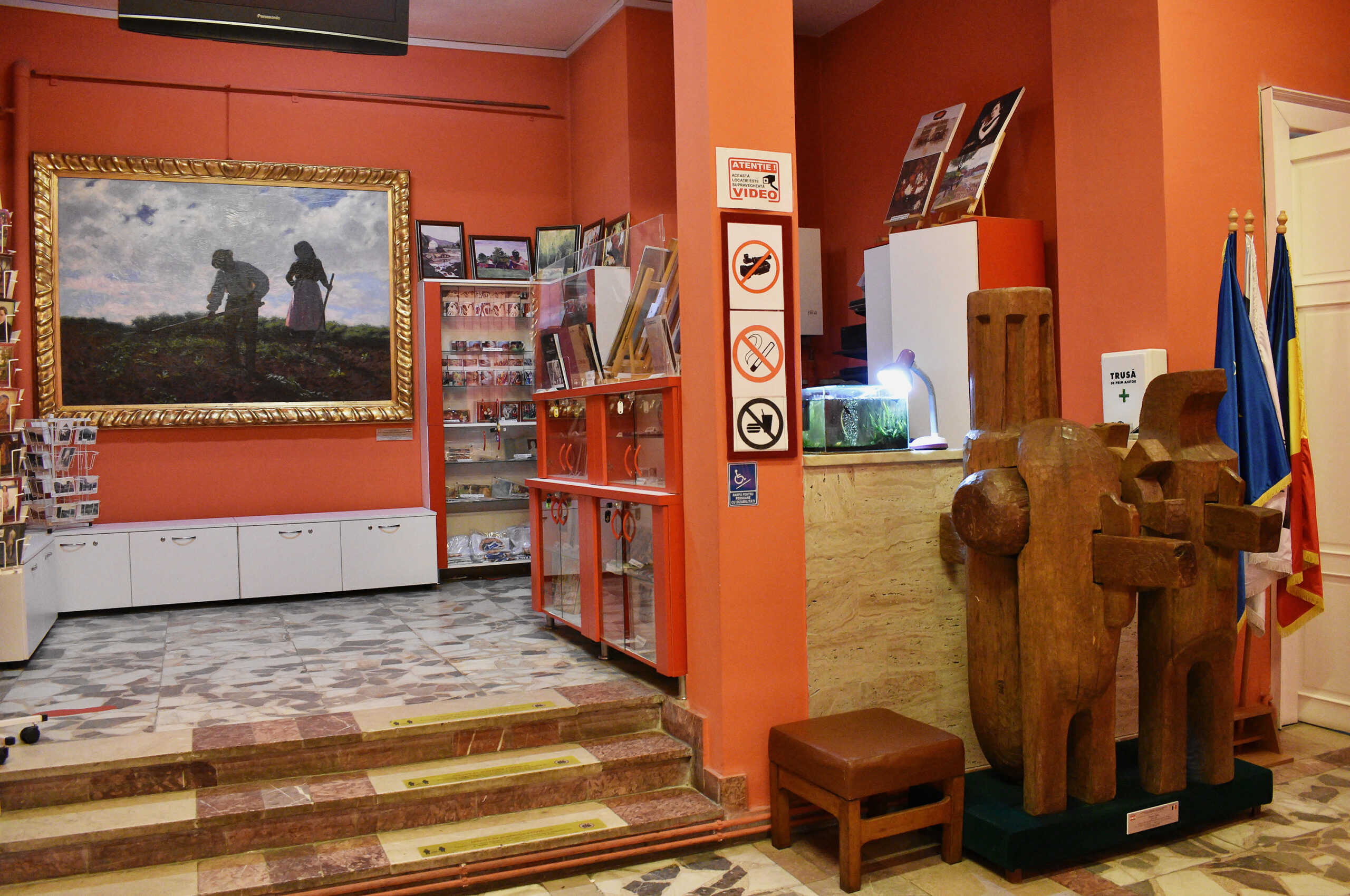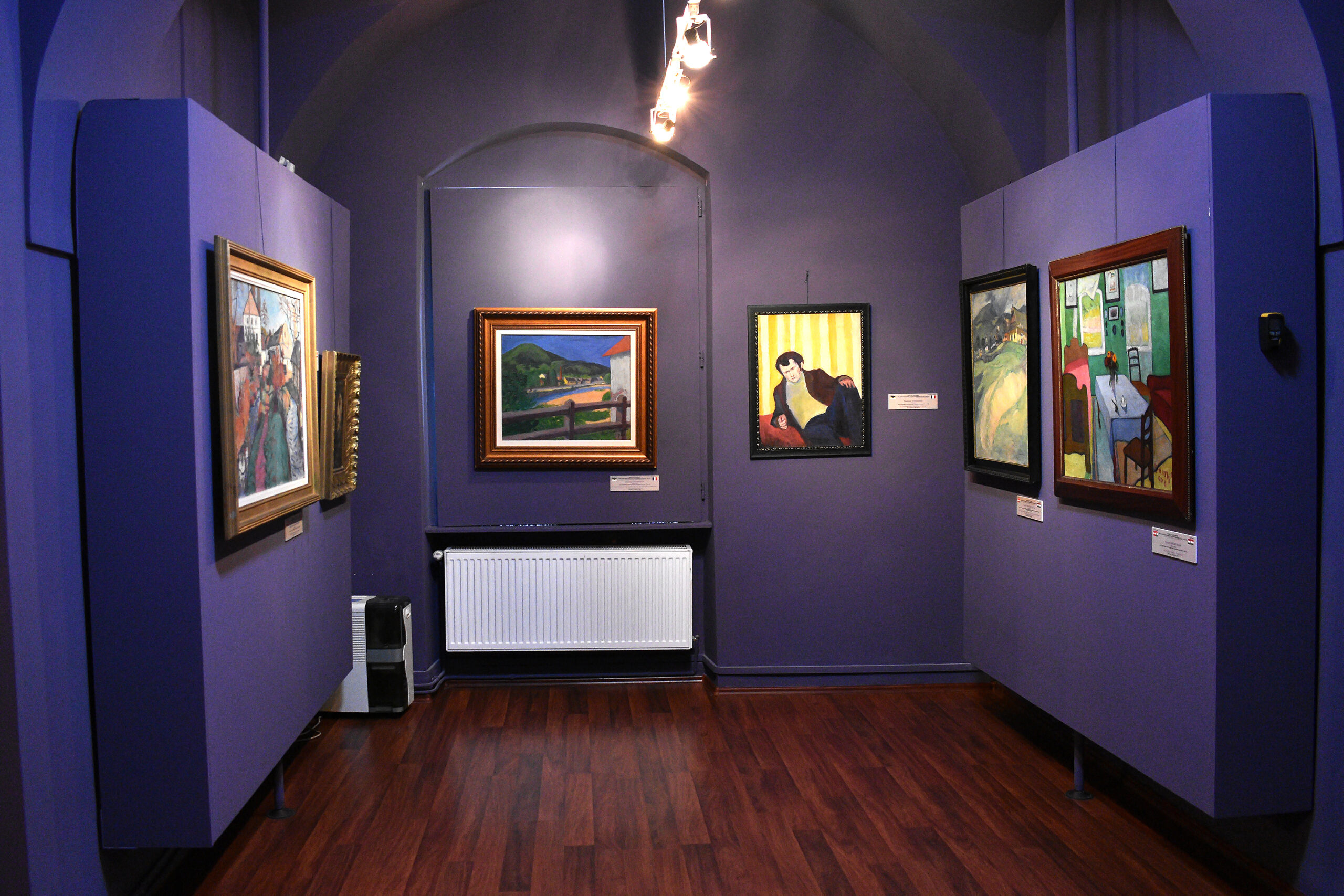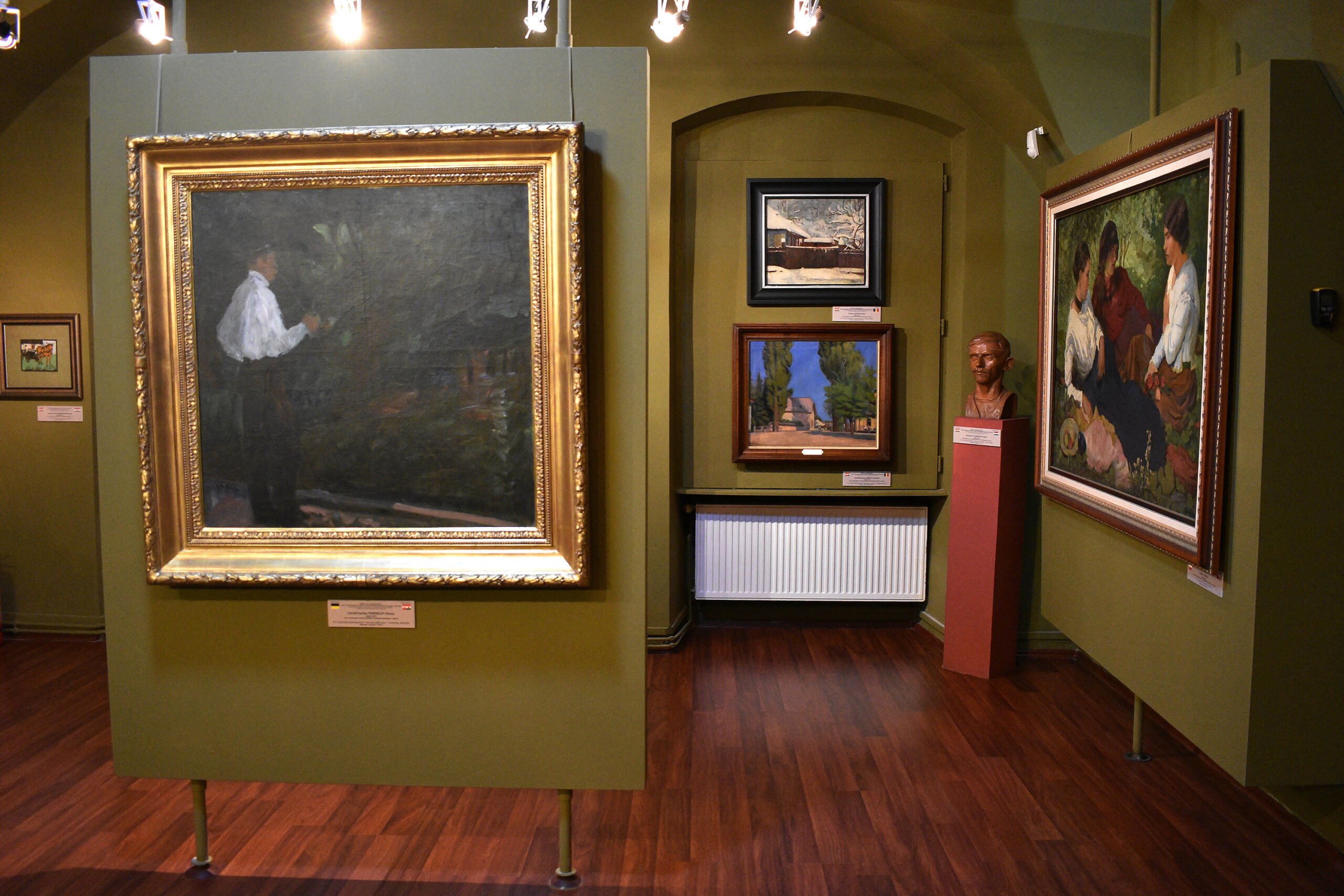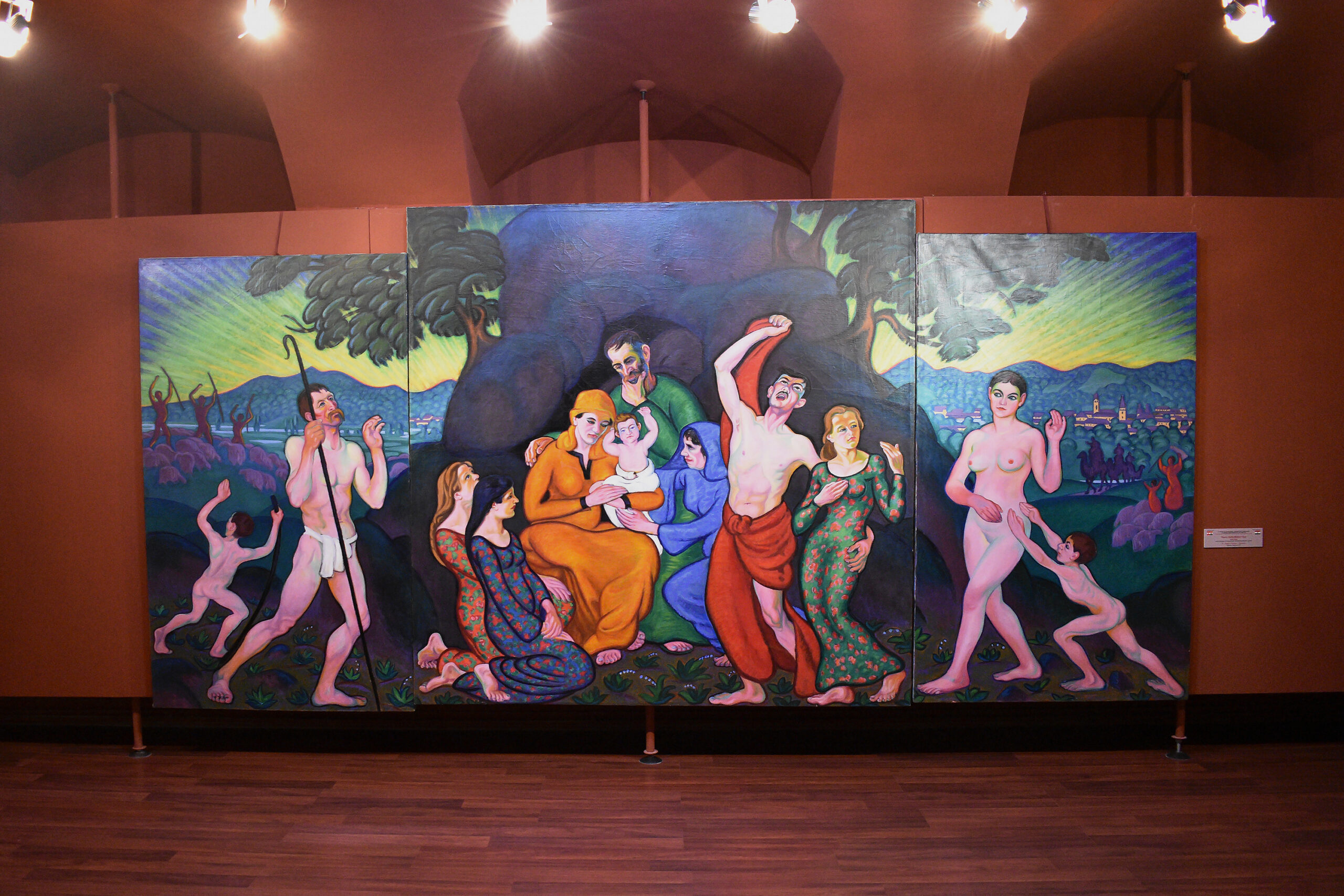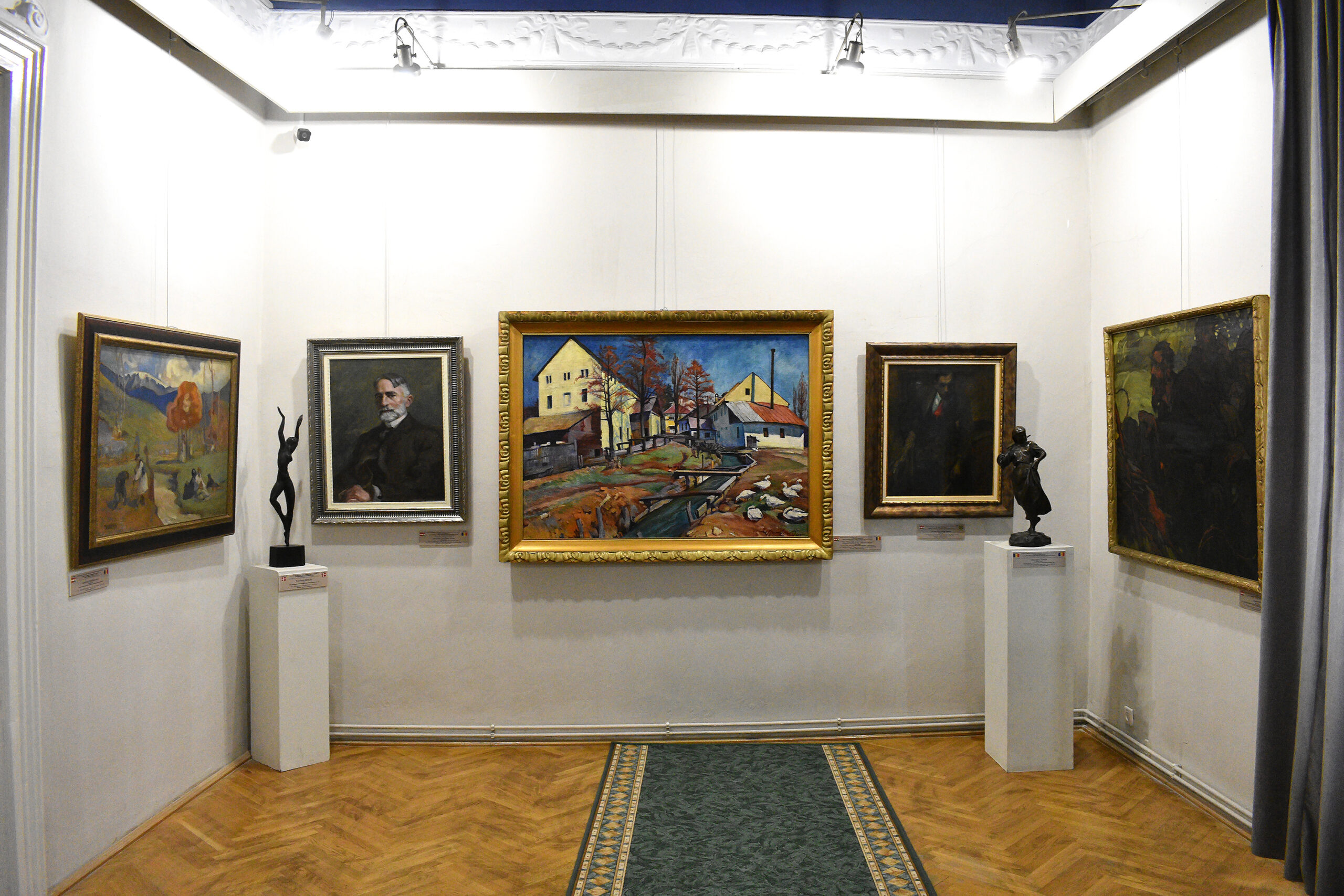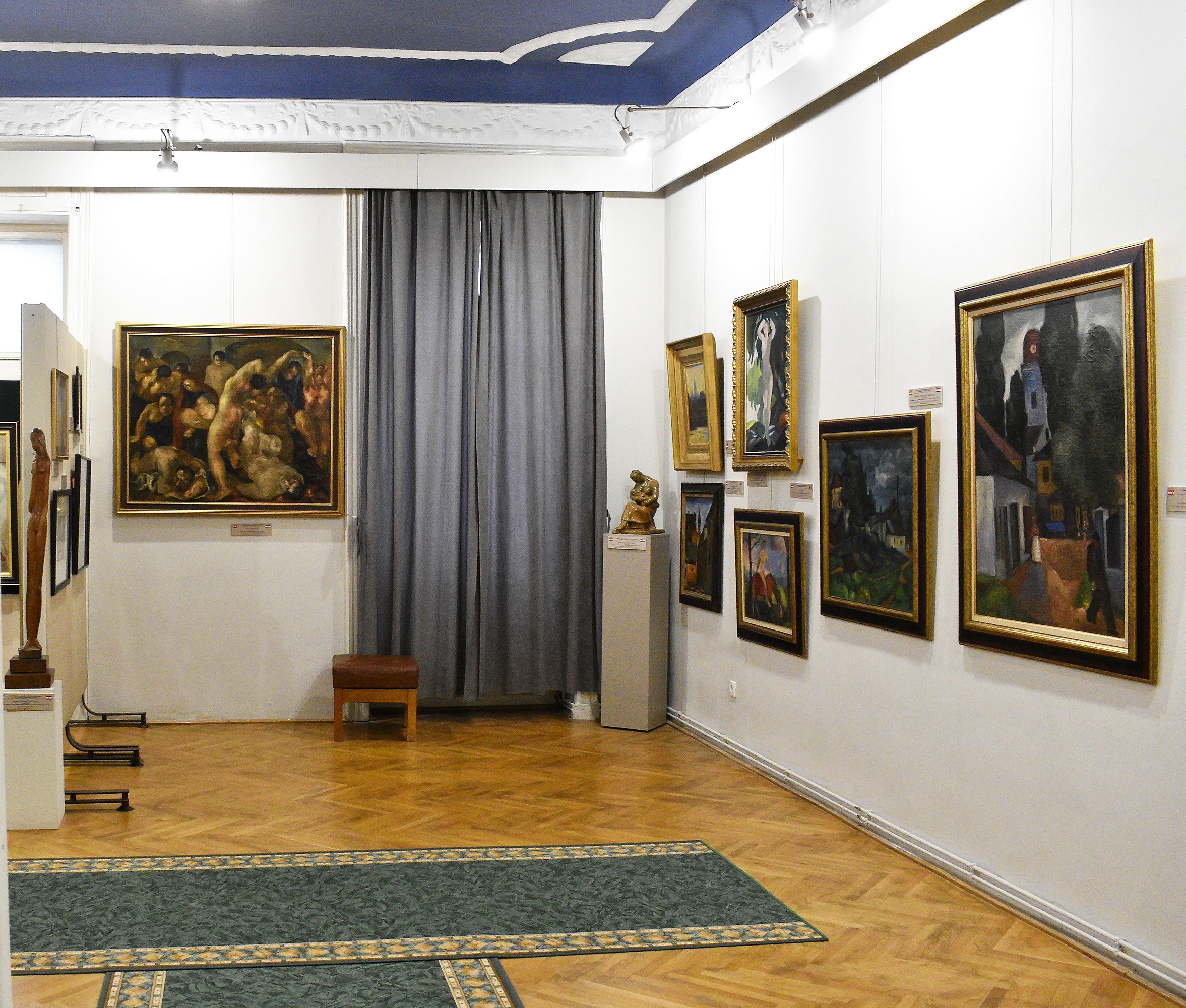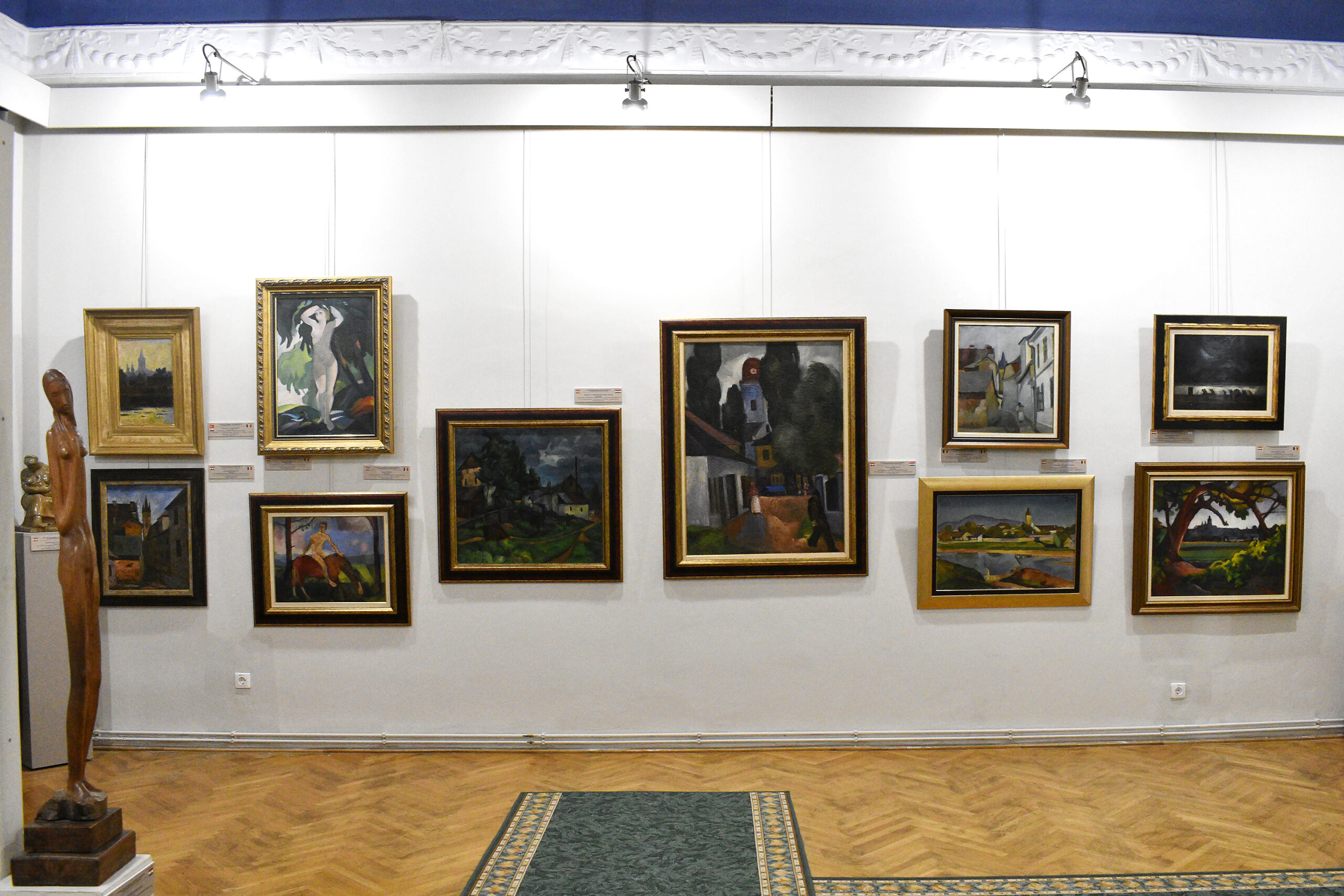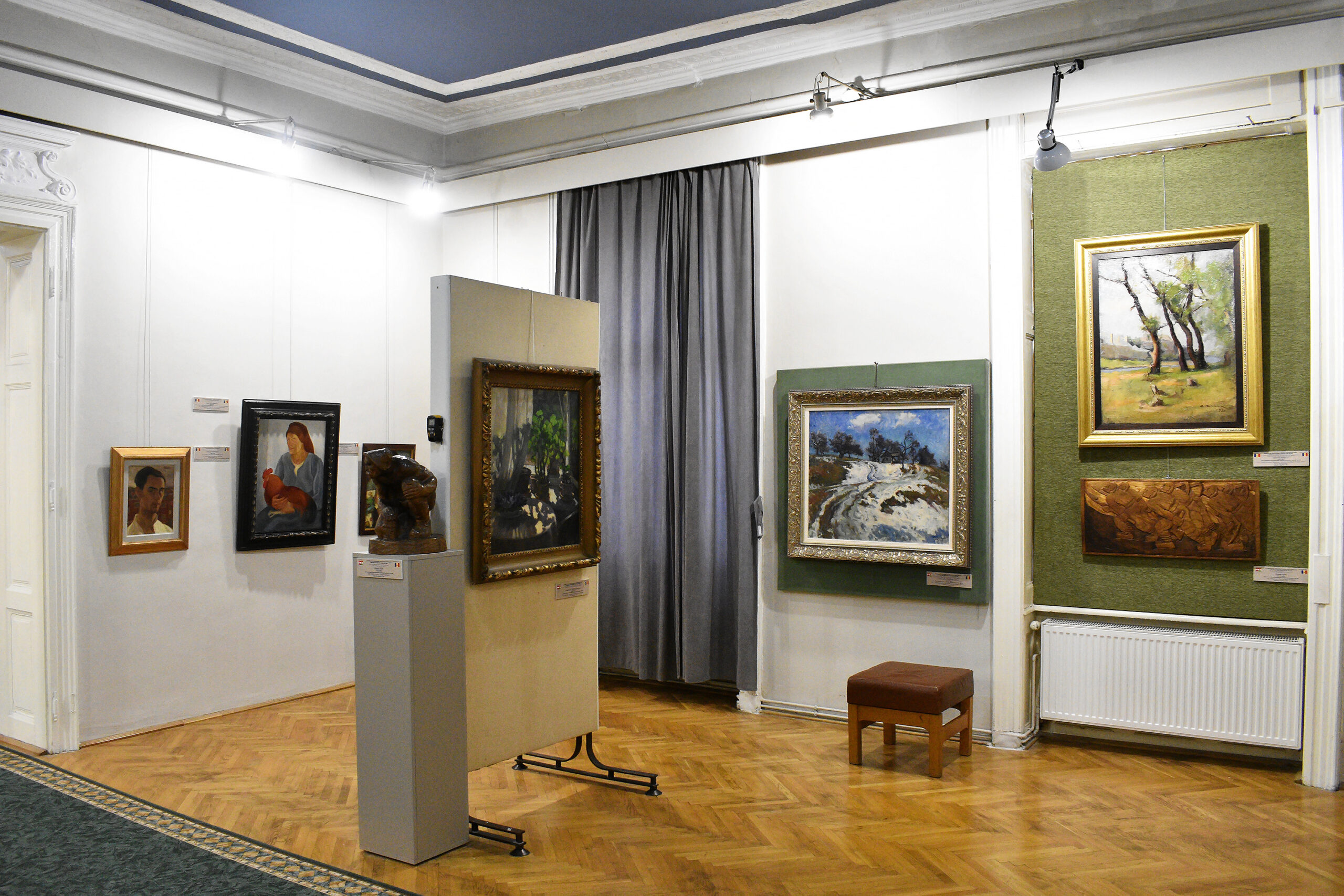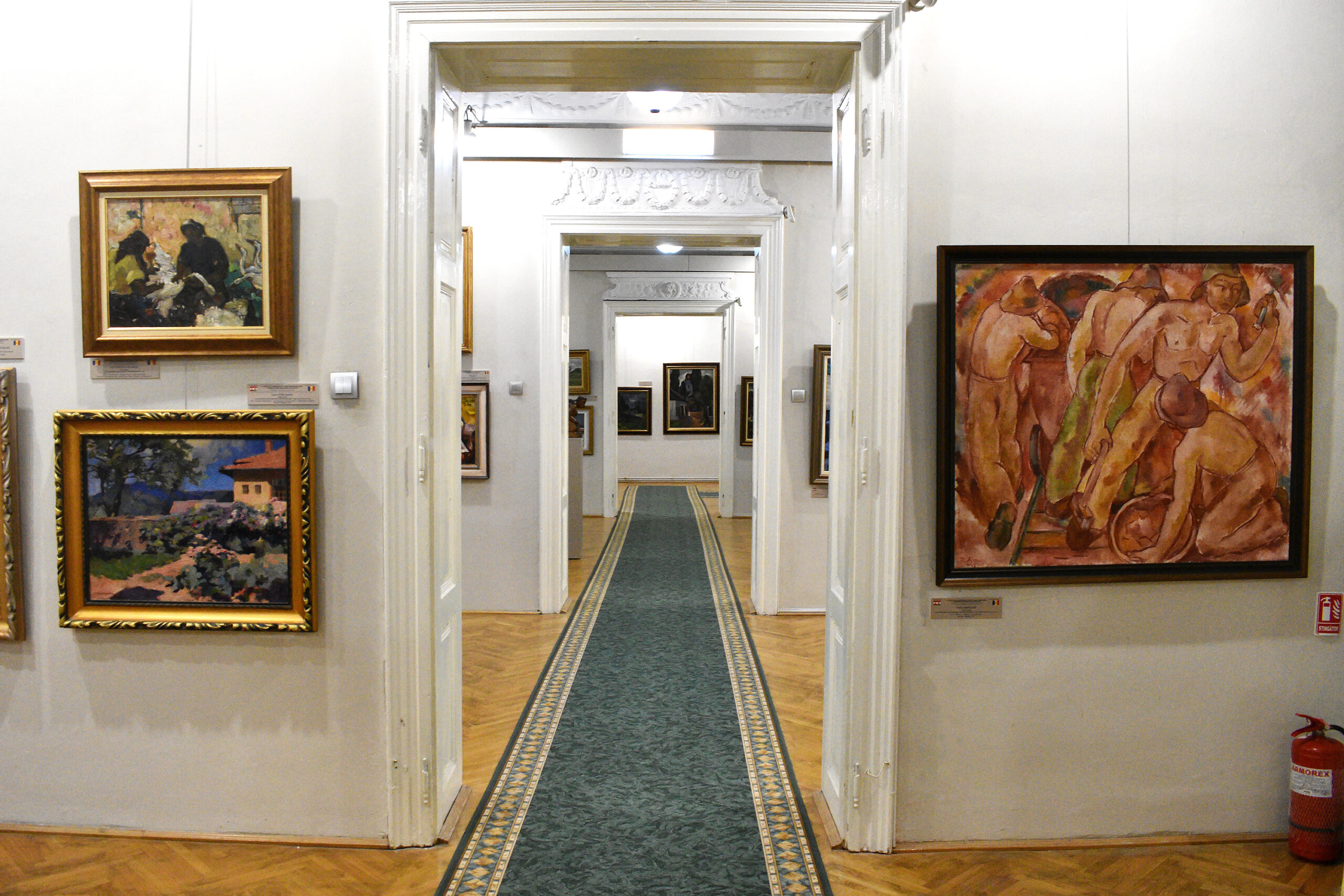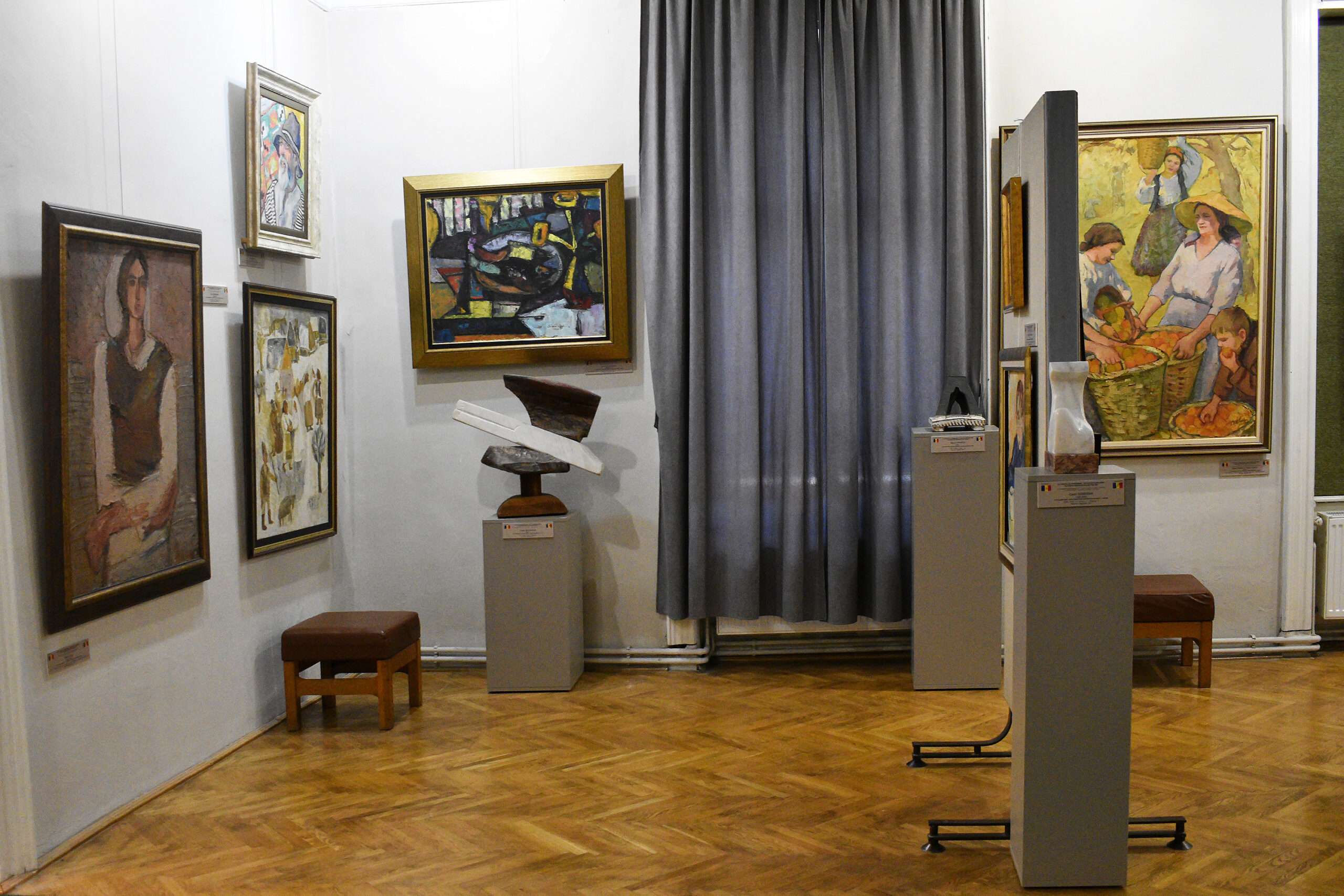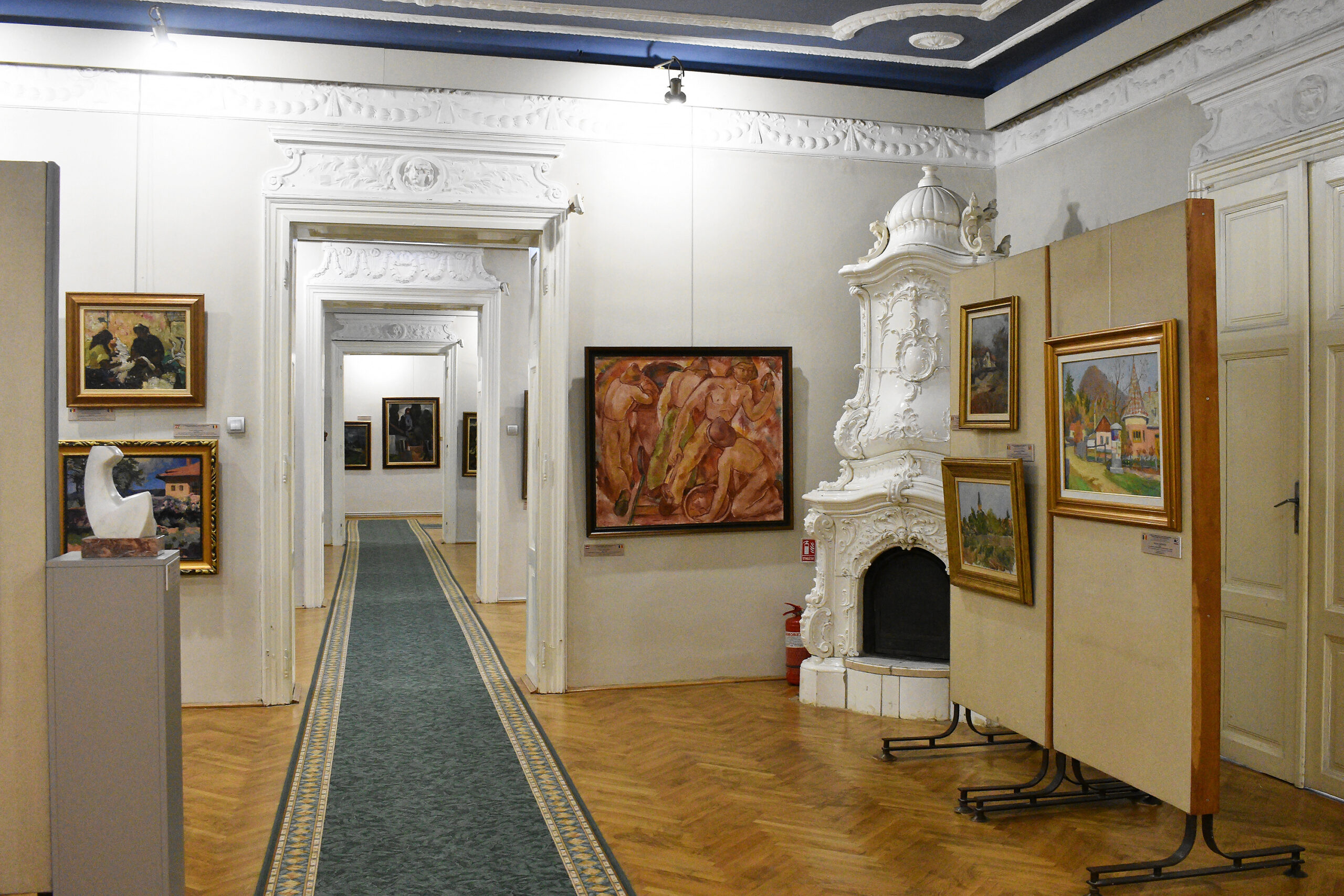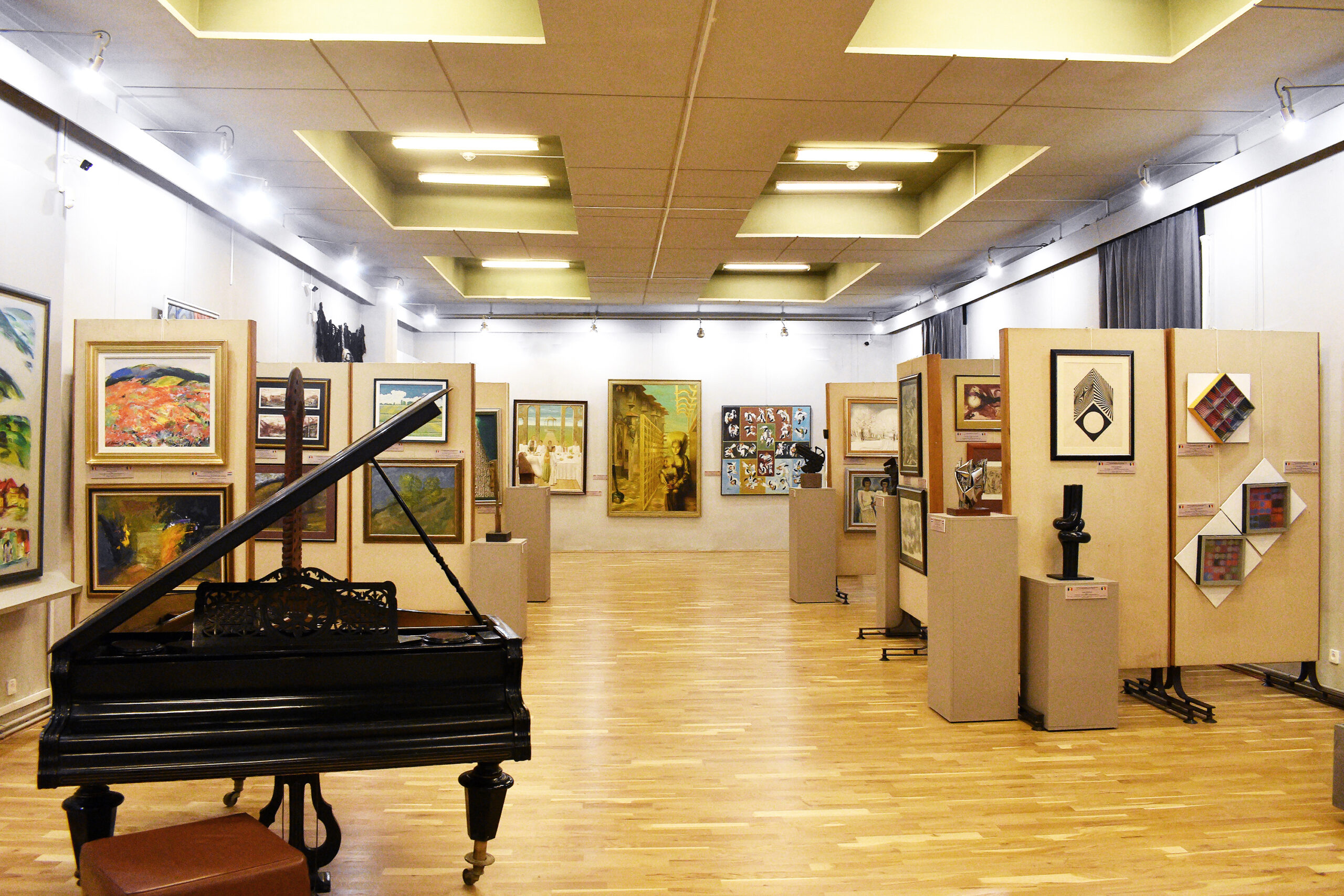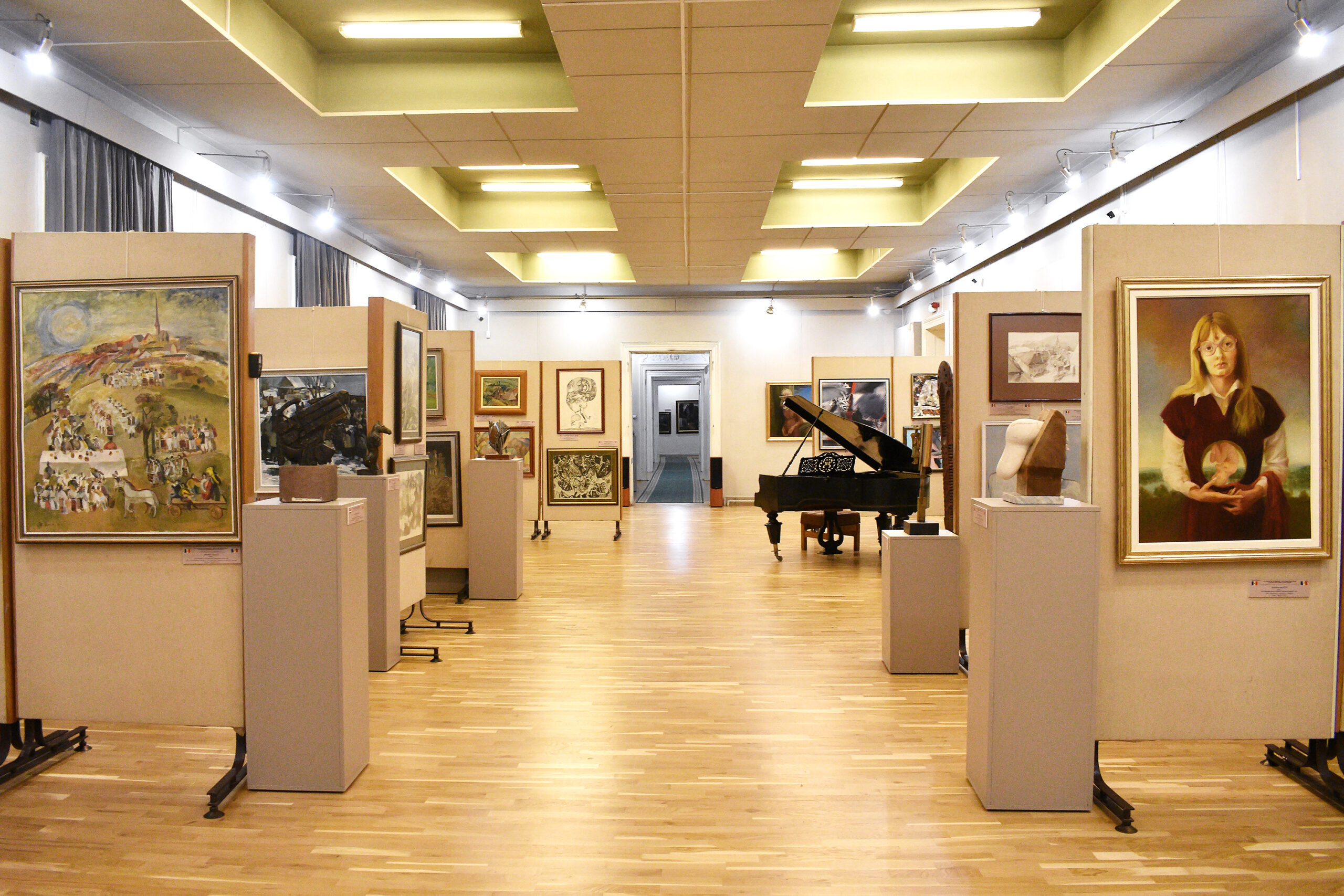"Baia Mare Art Center" County Art Museum.
Address: 1 Mai Street, 8, Baia Mare 430331, Maramureş county, Romania
Phone: +40262213964
Email: muzartbm@yahoo.com
Website: www.muzartbm.ro
Social networks:
https://www.facebook.com/muzartcabm
https://muzeuldeartabaiamare.wordpress.com/
Instagram: muzartbm;
Youtube: @MuzeulDeArtaBM;
TikTok: @muzartbm
The County Art Museum the « Artistic Centre Baia Mare» is a cultural institution located in the Old Center of Baia Mare, at 1 Mai Street, no.8. The building of the museum operates was erected in 1748 and is a historical monument of national importance. Although seen from the outside it may seem quite unimpressive from an architectural point of view, inside visitors will be pleasantly surprised by the vaulted ceilings in the ground floor rooms, by the Art Nouveau ornaments existing on the ceilings of the high halls upstairs, as well as by the stoves made in the Rococo style. Also, the edifice that currently houses the museum’s exhibitions is distinguished by its history. The basement and ground floor of the building were built during the Habsburg Empire with the purpose of serving as a salt deposit and headquarters of the Saline Office. After about 100 years, it was refurbished and transformed into a bank headquarters, and from the early 1900s it became the private house of lawyer Dr. Teofil Dragoș. Being an important personality in the community from a political and social point of view (besides the legal profession, Teofil Dragoș was also President of National Liberal Party of Satu Mare, prefect, deputy, president of the “Aurora” Credit and Savings Institute in Baia Mare and president of the Satu Mare Chamber of Commerce and Industry) and having the necessary financial resources, Teofil Dragoș resorted to extending the building by superposing. After his death in 1934, the building was donated to the City Council, and in 1954 it was given to the administration of the Maramureș County Museum. Subsequently, the Art Department of the museum operated in the building, which in September 2006 was reorganized as the County Art Museum « Artistic Centre Baia Mare ». This museum is distinguished at national level by the fact that it is the only institution focused exclusively on collecting, hoarding and exhibition capitalization of works of art created by artists from Baia Mare, as well as by artists who worked in Baia Mare, although they were born or were professionally trained in other cultural spaces in the country and abroad.
The foundations of the artistic movement in Baia Mare were laid between 1896-1901 by Simon Hollósy and a group of painters from Baia Mare, namely Béla Iványi Grünwald, Thorma János, Réti István and Károly Ferenczy. Hollósy Simon, native of Sighetu-Marmatiei, completed his professional training at the Royal Academy of Fine Arts in Munich, where he later came to be recognized “as a first-rate talent”. Before his 30th birthday, he became a master of fine arts for students around the world and founded an internationally acclaimed private painting school in Munich. As a result of this resounding success and his Maramures origins, the officials from Baia Mare invited him to come and work together with his students on his native lands. This context was considered by Hollósy to be an excellent opportunity to overcome the limits of studio painting, for which he accepted the invitation of Mayor Thurman Oliver and, in May 1896, brought his first group of students from Munich to Baia Mare.
For six years, until 1901, Hollósy continued to come with his students to Baia Mare during the summer. Thus, during this time, over 400 artists from various European countries, but also from North America, Australia and India, created in Baia Mare under Hollósy’s guidance. The cosmopolitan character of these groups of artists, correlated with the academic and professional studies that many of them followed in other centres, such as Munich, Budapest, Bucharest and Paris, made the artistic activities carried out in Baia Mare to be strongly influenced by the ideas and aesthetic models existing at international level. These influences were reflected in the multitude of stylistic currents existing in the art of Baia Mare, starting from the plein air realism specific to the first creations, and up to the postmodernism that characterizes contemporary art.
After 1901, the pedagogical activity in the artistic field continued in Baia Mare under various forms and names (Free School of Painting, School of Fine Arts, Free School of Fine Arts, etc.), which made over time in the city to carry out their creative activity over 3,500 artists from Europe and beyond. The relief, the natural setting and the beautiful landscapes of Baia Mare and its surroundings were important attraction factors of the artists in this area, significantly influencing their creation. For this reason, Baia Mare, also called “the city of painters”, came to own one of the few European artistic colonies that functioned uninterruptedly, starting from the 19th century until today.
In this context, the cultural heritage of the County Art Museum « Artistic Centre Baia Mare» has progressively increased over time, currently totalling over 6,790 cultural goods, divided into the following collections: painting, graphics, sculpture, decorative art, art photographs and documentary fund. Among them, visitors can admire in the permanent exhibition of the museum, entitled “Baia Mare Artistic Center. European landmarks between traditions and innovations“, a selection of 350 works, exhibited in 11 halls. The exhibition presents a chronological synthesis of the artistic creation made in Baia Mare, starting with 1896 and until now, being organized problematically, thematically and chronologically.
The museum’s opening hours are from Tuesday to Sunday, between 10:00h and 17:00h.


